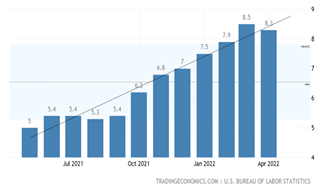|
ESG (Environmental, Social & Governance) programs have been on the horizon as a commitment for Private Equity firms and portfolio companies for the last several years. However, in the latter half of 2021, we saw more funds launched to invest in sustainability, adjust their investment strategy to invest in companies that source strategically and responsibly for the future as well as invest time and resources in the evaluation and review of ESG programs across their active investments. The private equity and venture capital ESG leaders look to invest in companies that have goals of net-zero emissions, board & employee diversity, and employee & community engagement. Though these are only a few metrics that can be included in ESG commitments, there is a concrete encompassing idea that stakeholders want to invest in responsible companies. When looking at ESG risk factor during the due diligence phase of any investment, a majority of firms have a framework in place to evaluate the key components while at the same time want to do more around ESG in the due diligence process. The minority of PE and VC firms that do not have a plan in place for ESG risk factor during the due diligence process face or will face external pressure from LPs to develop and deploy the process improvement. Additional pressure likely comes from regulatory bodies at the industry level or national level as we have seen in Europe. For the firms that do not have a process in place today, there is certainty that the pressures will build with impact on fundraising, relationship with debt providers, and reputation with operators. Whether the objective is to target acquisitions that are net-zero companies or to help current investments source quality and more sustainable products & materials, there will be a push for firms to invest in ESG platforms that will be used for reporting and vetting current and future investments, respectively. If the investments do not meet the ESG standards, it is crucial that the investment team or committee clearly understand the areas that fall short, are able to develop high level plan to improve and have confidence in the operator’s ability to execute on the plan. Failure in any of these areas will have a material impact on exit value of the acquired company, return on the current fund and ability to increase size of the next fund. When it comes to implementing ESG programs as the portfolio company level, there are some areas where there are more “ESG friendly” areas to impact and industries that are more capable of being considered environmentally and socially responsible. Other industries like oil and coal have many years before conditions are optimal for ESG standards, but still have an opportunity to develop and execute on an ESG plan to make incremental improvements. Regardless of the industry mix of the portfolio for the Private Equity firm, there are risk factors that come with not constructing an ESG program or minimizing the value of an ESG program. In 2022, the PE firms that want to improve and expand ESG programs and frameworks will need to consider a few areas. One is creating a quality program that covers areas that are common to all holdings with flexibility and customization to meet the needs of a specific industry or to meet the portfolio company where they are. For it to be a quality program, firms need to look at environmental impacts based on specific portfolio company industry. Technology companies need to make improvements in the recycling of IT hardware, reduce power consumption at their data centers, and reduce the carbon footprint of each employee. Compared to manufacturing companies that focus on the sustainability of their suppliers, reduction of carbon emissions at their facilities and programs to offset emissions within their transportation network. The social initiatives programs should be evaluated closely to ensure they align with the organization and the employees. Local and regional initiatives are highly recommended to create direct connectivity between the employee and the initiative. Even though Governance is generally well addressed in the due diligence process by most PE firms, this area should not be taken for granted and will need ongoing reviews and monitoring to comply with the ESG program. Another critical area for a best-in-class ESG program is the quality of data collection and reporting. The deployment of a data collection and reporting process or tool is the heartbeat of the program that keeps everything connected to it alive. Without a process or tool, even the most well thought out and comprehensive program will eventually die out or become so ineffective that all lose interest. Without benchmarking, standardized metrics, reporting on KPI’s and the simple tracking of process within ESG, all aspects of the program are weakened. To build quality metrics, there needs to be fast and easy data collection to ensure both the PE firm and portfolio companies maintain accurate data that tie into the overall ESG initiatives. It will be interesting to see where every industry moves towards when talking about ESG as well as the thresholds for ESG standards when firms decide to invest and approach ESG programs and reporting with active investments.
By: Ryan Peterson, Treya Partners Business Development Manager
2 Comments
7/29/2022 09:50:56 am
The minority of PE and VC firms that do not have a plan in place for ESG risk factor during the due diligence process face or will face external pressure from LPs to develop and deploy the process improvement. Thank you, amazing post!
Reply
Leave a Reply. |
Categories
All
|


